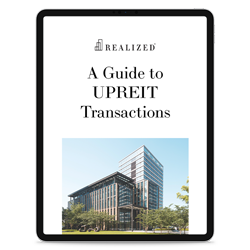
As property owners contemplate their transition into retirement, many are evaluating how to convert their physical assets into reliable streams of income that will last throughout their golden years. While real estate has been a cornerstone for many retirement strategies, the complexities of ownership and management often pose challenges for those seeking a more passive investment approach. This is where Umbrella Partnership Real Estate Investment Trusts, or UPREITs, present an intriguing opportunity.
Understanding UPREITs
UPREITs allow direct property owners to translate their holdings into a portfolio of professionally managed real estate assets. This transformation is not just a consolidation of assets but a strategic repositioning designed to leverage the inherent benefits of real estate investment trusts (REITs) within a unified framework. UPREITs can provide the liquidity, diversification, and potential for stable income that many retirees crave, without the daily hands-on management of traditional property ownership.
The Strategic Shift
Imagine transitioning from active property management to a passive income model while deferring any immediate tax burdens. This is made possible by contributing your property to a UPREIT, thus converting physical real estate equity into units within a diversified real estate investment fund. This option not only allows for tax deferral of capital gains but also can avoid the complexities associated with property upkeep and tenant management.
A True Case for Transformation
Consider a real estate owner in her late fifties who has spent decades managing commercial properties. As she approaches retirement, the appeal of a simplified, income-generating investment becomes more attractive. By transitioning her holdings into a UPREIT, she can retain the potential growth and income benefits of real estate investment while relinquishing the hands-on responsibilities that previously burdened her lifestyle. Her focus can then shift to enjoying retirement rather than managing properties, without compromising on her financial goals.
The Drawbacks and How to Navigate Them
Of course, no investment is without its risks and potential downsides. UPREITs, like all REITs, are subject to market fluctuations and may not provide a guaranteed income. Moreover, the lack of control over specific property management decisions can be daunting for those accustomed to calling the shots. However, these risks can be mitigated through thorough due diligence and a well-balanced portfolio strategy that integrates both UPREITs and other asset classes.
The Path Forward
For property owners considering their next steps, the key is to weigh the benefits of UPREITs against their current and future financial needs. Consulting with financial advisors who understand both real estate and retirement planning is crucial in crafting a strategy that aligns with personal risk tolerance and income objectives.
In the evolving landscape of retirement planning, UPREITs offer a compelling blend of stability and simplicity, marrying the benefits of real estate investment with the convenience of passive income streams. It's a modern twist on a classic investment strategy, one that could redefine the retirement experience for real estate owners who are ready to embark on their next chapter.



